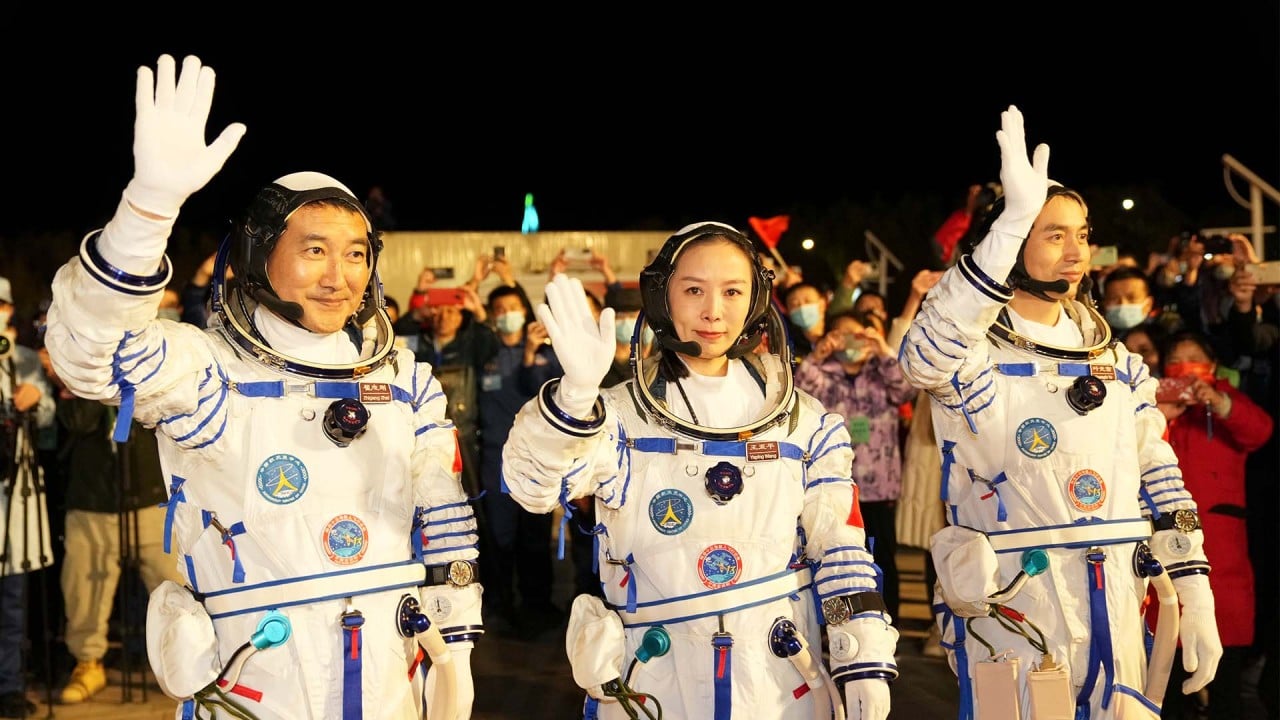
China needs Nasa, SpaceX hotline to avoid space collision scares, Chinese scholar says
- Delayed response to SpaceX satellite events reveals China’s shortcomings in sharing space flight information, Wu Riqiang says
- Renmin University scholar and former missile engineer calls for deal similar to the Nasa-SpaceX data-sharing agreement and a hotline
His analysis was part of an article published in the latest edition of World Affairs, a journal affiliated to the Chinese foreign ministry.

In his article, Wu also urged China and the US to establish “a more timely” communication channel, such as a hotline, to share information about potential satellite collisions.
Concerns over such collisions emerged in December when Beijing – in a rare declaration – revealed that two “close encounters” had occurred in July and October.
Astronauts at China’s Tiangong space station had had to take emergency action each time to avoid collision with the Starlink satellites, Beijing said at the time.
China and the US established a civil space dialogue mechanism in 2015 and, in 2016, US State Department and Chinese foreign ministry officials met for the first time to talk about space security. However, no meetings have been held since 2017.
Musk denies satellites are blocking space in wake of Chinese complaint
As space competition heats up between the world’s top geopolitical rivals, there are growing calls for their space dialogues to be revived, amid fears that any accident may escalate into hot conflict between the two leading military powers.
Nasa and the US military have amassed rich experience in managing collision risks and potential impacts. China is a relative latecomer to space exploration, and hence lacks experience in sharing detailed space flight information, Wu said. This which could also partly explain why Beijing did not immediately respond to the two Starlink incidents, lodging its complaint only months later, he wrote.
SpaceX and Nasa last March signed a data-sharing agreement for space flight safety – defining the rules, responsibilities and procedures for coordination on orbital positions and manoeuvre plans.
According to Wu, China should coordinate with the US to establish a similar mechanism.
Under the agreement, Nasa also requires SpaceX, which currently has at least 1,260 satellites in orbit, to plan Starlink launches such that they are at least 5km above or below the highest and lowest points of the International Space Station orbit around the Earth.
Wu said to establish a similar mechanism, Beijing may have to accept the threshold of emergency collision criteria set by the US and publish the orbital data of its space station.
However, like Nasa, China may also require SpaceX notifications before each Starlink launch so the space agency in Beijing can determine if that mission would pose any risks of collision.
In the latest sign of progress on the matter, China last month announced it had begun – for the first time – to publish basic orbital positions of its space station on the website of the China Manned Space office, the central agency in charge of crewed missions.
However, Wu said more detailed information was needed.
Space authorities on either side have so far been communicating via email under the 2014 China-US Strategic and Economic Dialogue, a flagship effort by the Barack Obama administration to engage with Beijing.
“It goes without saying that the safety of the astronauts is the highest priority of the manned space programme,” Wu wrote in calling for a hotline to be set up.
“Operating a long-term manned space station is a completely new topic for China, and establishing a collision-avoidance mechanism to prevent similar dangerous approach events from happening again will be an extremely important and very urgent task.”


